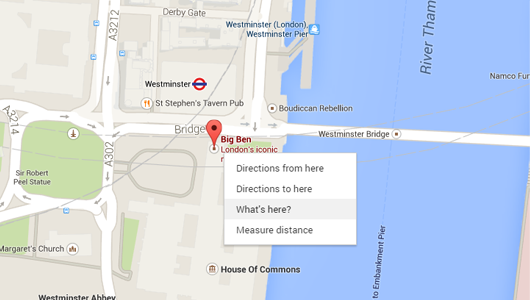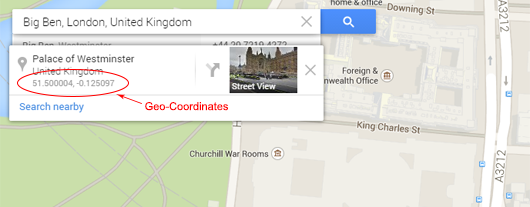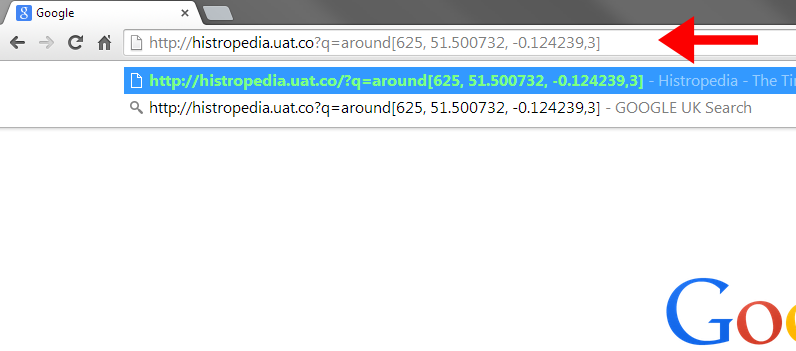Tutorial: Create instant location based timelines using Wikidata queries
By Sean McBirnie
This tutorial will teach you how create an instant timeline based on a specific location and radius. Just like the “descendants of” timelines from the previous tutorial these location based timelines are made using Wikidata queries
To create the query we are going to select a specific location using a geo-coordinate and set a radius in km. The query then will then populate the timeline with all the events that have their location set within the defined radius. This means we can explore the local history of any location, you might want to make a timeline of the area where you were born, or where you live, or maybe from a famous landmark or building. Here are a couple of queries to give you an idea. 5km radius of the Eifel Tower, Paris http://histropedia.com/timeline?q=around[625, 48.858366, 2.294449,5] 3km radius of Big Ben, London http://histropedia.com/timeline?q=around[625, 51.500732, -0.124239,3] During this tutorial I will use the example above of 3km radius from Big Ben, London. The first part of this tutorial will show you how to use Google Maps to get the geo-coordinates needed for the query. If you already know how to find geo-coordinate you can jump to part 2. NOTE: for the query you need longitude and latitude coordinates expressed in decimals, not degrees, minutes, second as used in Wikipedia articles.PART 1 – Finding the geo-coordinates
Step 1 - Find a location of interest on Google Maps. Open Google Maps and navigate to the place of interest, in this case Big Ben, London. Step 2 – Get the geo-coordinates Right click (cmd+click if you using a Mac) on the point on the map you want to get the coordinates for and select “what’s here?”
An information box will appear under the search box on Google Maps, in the bottom of the box there are 2 sets of numbers, these are the geo-coordinates for that location. Select the numbers and copy them to the clipboard, or make a note of them somewhere, you will need them for the query.
 The geo-coordinates for Big Ben, which is actually the nickname for the Great Bell of the clock in the Palace of Westminster, are 51.500732, -0.124239.
NOTE: If you are using the classic version of Google Maps when you chose what links here the coordinates appear in the search box, not in the drop down info box as shown above. This actually makes copying the coordinates much easier. Also sometimes Google Maps opens in classic mode when you follow a link to a location.
The geo-coordinates for Big Ben, which is actually the nickname for the Great Bell of the clock in the Palace of Westminster, are 51.500732, -0.124239.
NOTE: If you are using the classic version of Google Maps when you chose what links here the coordinates appear in the search box, not in the drop down info box as shown above. This actually makes copying the coordinates much easier. Also sometimes Google Maps opens in classic mode when you follow a link to a location.
PART 2 – Building the query URL
To run a Wikidata query on Histropedia we simply have to append the query to the Histropedia timeline URL. The query URL to create a location based timeline can be broken into 4 parts as shown in the diagram below. The URL has been filled in with coordinates for Big Ben, 51.500732, -0.124239, and a radius of 3 km, here it is in plain text so it can easily be copied and pasted
http://histropedia.com/timeline?q=around[625, 51.500732, -0.124239,3]
The URL has been filled in with coordinates for Big Ben, 51.500732, -0.124239, and a radius of 3 km, here it is in plain text so it can easily be copied and pasted
http://histropedia.com/timeline?q=around[625, 51.500732, -0.124239,3]
PART 3 – Create the timeline
To create the timeline simply copy and paste the URL into a web browser. Click here to run the example query of a 3km radius from Big Ben, London.
Our timeline creating robot, Histrobot, will run the query on Wikidata and add the results straight to the timeline.

If you already have events on the timeline from a previous session, you will be prompted with the following message:
 Select “Replace” to discard the previous events and show the new result only. Learn more about the Merge or Replace feature
Select “Replace” to discard the previous events and show the new result only. Learn more about the Merge or Replace feature